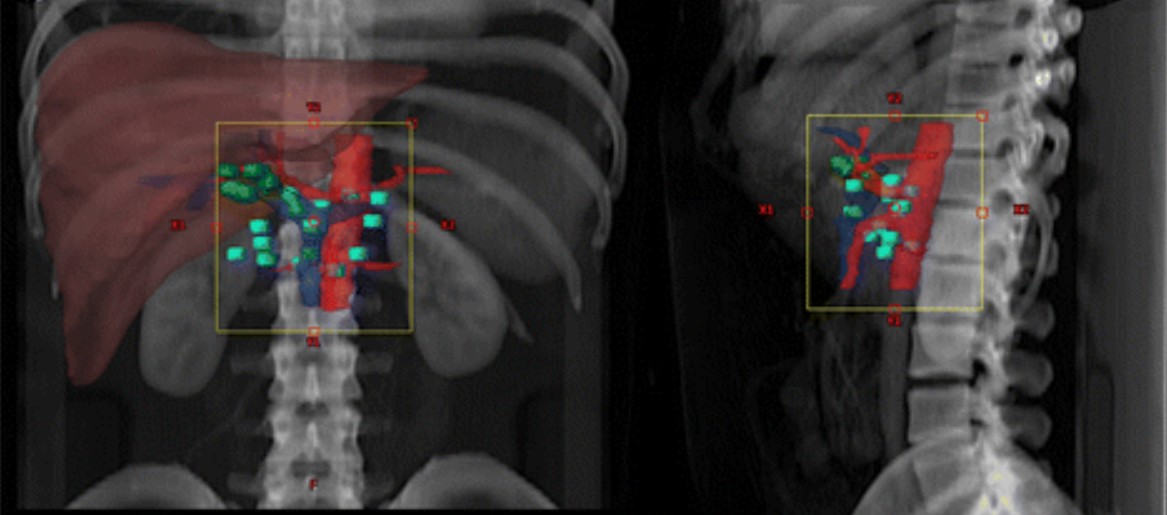글로벌 연구동향
방사선종양학
- [Radiat Oncol.] Patterns of failure after resection of extrahepatic bile duct cancer: implications for adjuvant radiotherapy indication and treatment volumes.
성균관의대, 경상의대 / 최훈식, 강기문, 김태규*, 송진호*
- 출처
- Radiat Oncol.
- 등재일
- 2018 May 8
- 저널이슈번호
- 13(1):85. doi: 10.1186/s13014-018-1024-z.
- 내용

Abstract
BACKGROUND:
The role of adjuvant radiotherapy (RT) and setting proper RT target volumes have not been clearly demonstrated for extrahepatic bile duct (EHBD) cancer, due to the rarity of the disease and the lack of randomized trials. This study was conducted to evaluate the indication and treatment volume for adjuvant RT in EHBD cancer patients by identifying the prognostic factors for loco-regional (LR) failure, and analyze the patterns of LR failure.METHODS:
Ninety-three patients with EHBD cancer, who underwent resection without adjuvant RT, at 2 medical centers, between 2001 and 2016, were analyzed retrospectively. Univariable and multivariable analyses were performed to find the prognostic factors for LR recurrence. The initial patterns of failure were recorded, especially those of LR recurrence, and categorized according to the Japanese classification.RESULTS:
The median follow-up duration was 30 months, and 38 (40.9%) patients experienced LR recurrence during this period. With regards to LR recurrence, close or positive resection margin (RM) status (p < 0.001) remained statistically significant in the multivariable analysis. The most common LR recurrence sites were the tumor bed (18.3%), and lymph node (LN) stations No. 8 (14.1%), No. 9 (12.7%), No. 12 (12.7%), No. 13 (5.6%), No. 14 (21.1%), No. 16 (14.1%), and No. 17 (1.4%).CONCLUSIONS:
A close or positive RM status may be suggestive of high LR recurrence rates. In such cases, adjuvant RT may improve outcomes. When adjuvant RT is performed, the treatment volume should be well-designed so as to encompass the tumor bed, as well as LN stations No. 8, No. 9, No. 12, No. 14, and No. 16.
Author informationChoi HS1, Kang KM1,2, Jeong BK3,2, Jeong H3,2, Lee YH3,2, Ha IB3, Kim TG4, Song JH5,6.
1
Department of Radiation Oncology, Gyeongsang National University School of Medicine and Gyeongsang National University Changwon Hospital, 13 Samjungja-ro, Changwon, 51472, Republic of Korea.
2
Institute of Health Science, Gyeongsang National University, Jinju, Republic of Korea.
3
Department of Radiation Oncology, Gyeongsang National University School of Medicine, and Gyeongsang National University Hospital, Jinju, Republic of Korea.
4
Department of Radiation Oncology, Samsung Changwon Hospital, Sungkyunkwan University School of Medicine, 158 Paryong-ro, Masanhoewon-gu, Changwon, 51353, Republic of Korea. tg1.kim@samsung.com.
5
Department of Radiation Oncology, Gyeongsang National University School of Medicine and Gyeongsang National University Changwon Hospital, 13 Samjungja-ro, Changwon, 51472, Republic of Korea. cowtree@gnuh.co.kr.
6
Institute of Health Science, Gyeongsang National University, Jinju, Republic of Korea. cowtree@gnuh.co.kr.
- 키워드
- Adjuvant radiotherapy; Bile duct neoplasms; Recurrence
- 연구소개
- 담도암에서 수술 후 방사선치료의 효과에 대해서는 아직 논란이 있습니다. 또한, 방사선치료의 범위를 설정함에 있어서도 확립되어 있는 가이드라인이 존재하지 않습니다. 담도암은 순위권에 드는 흔한 암은 아니지만, 경남지역은 타지역에 비해 담도암의 유병률이 비교적 높은 것으로 알려져 있습니다. 그래서 창원에서 방사선치료를 시행하는 두 병원의 환자 데이터를 함께 분석하여, 간외담도암 환자에서 수술 후 재발하는 위치를 Japanese classification을 통해 최대한 상세하게 기술하였습니다. 본 연구결과를 통해 간외담도암의 방사선치료 시행시, 정교한 치료범위를 설정하는데 많은 도움을 받을 수 있을 것으로 생각됩니다.
- 덧글달기
- 이전글 [JAMA Oncol.] Efficacy and Safety of Transarterial Chemoembolization Plus External Beam Radiotherapy vs Sorafenib in Hepatocellular Carcinoma With Macroscopic Vascular Invasion: A Randomized Clinical Trial.
- 다음글 [Radiat Oncol J.] Interobserver variation in target volume for salvage radiotherapy in recurrent prostate cancer patients after radical prostatectomy using CT versus combined CT and MRI: a multicenter study (KROG 13-11).










편집위원
대규모 무작위 배정 연구처럼 잘 계획된 연구는 아니지만 방사선치료의 역할이 명확하게 규명되어 있지 않은 질환인 간외담도암에서 방사선치료의 역할과 치료 범위를 제시하고 있다.
2018-06-21 10:54:47